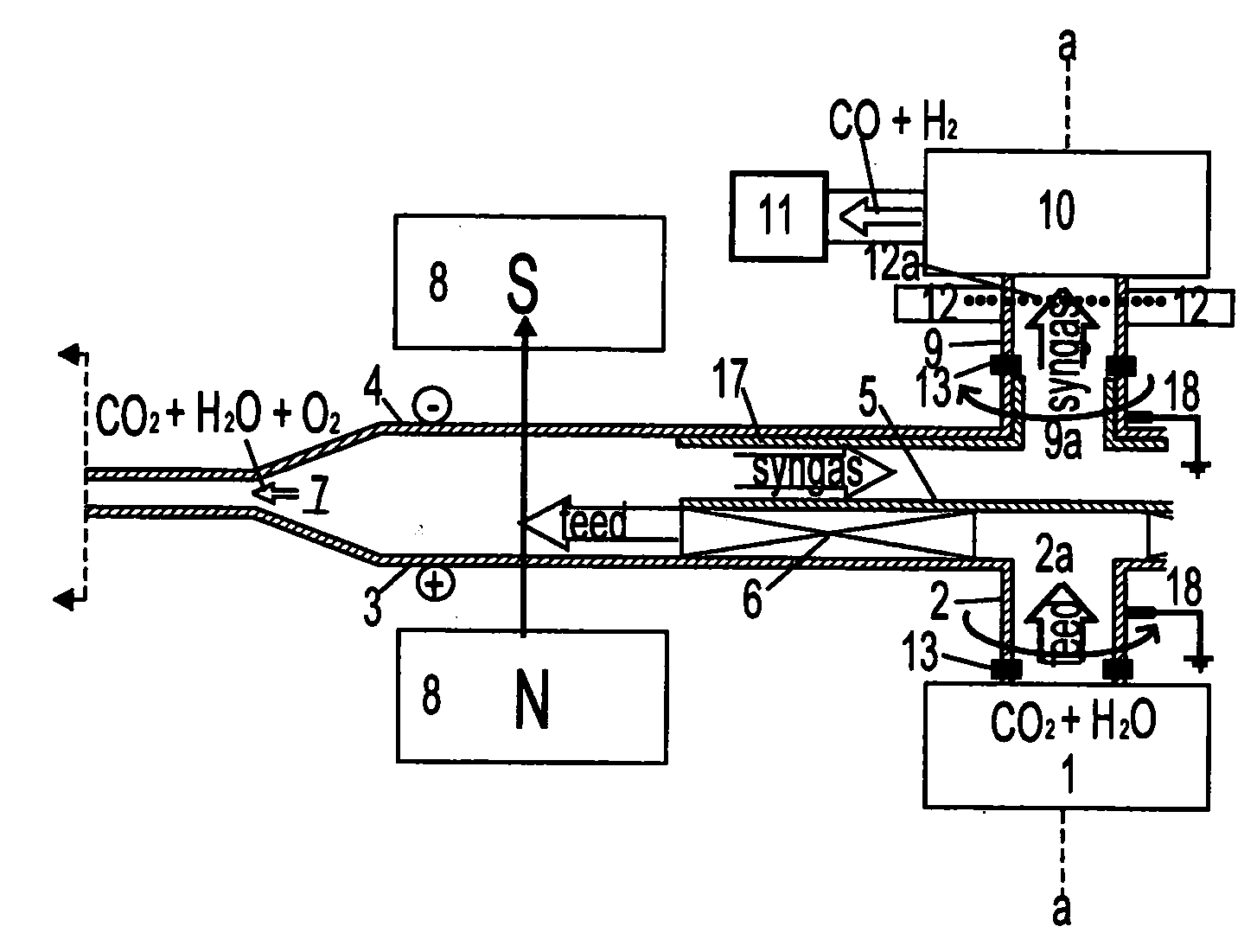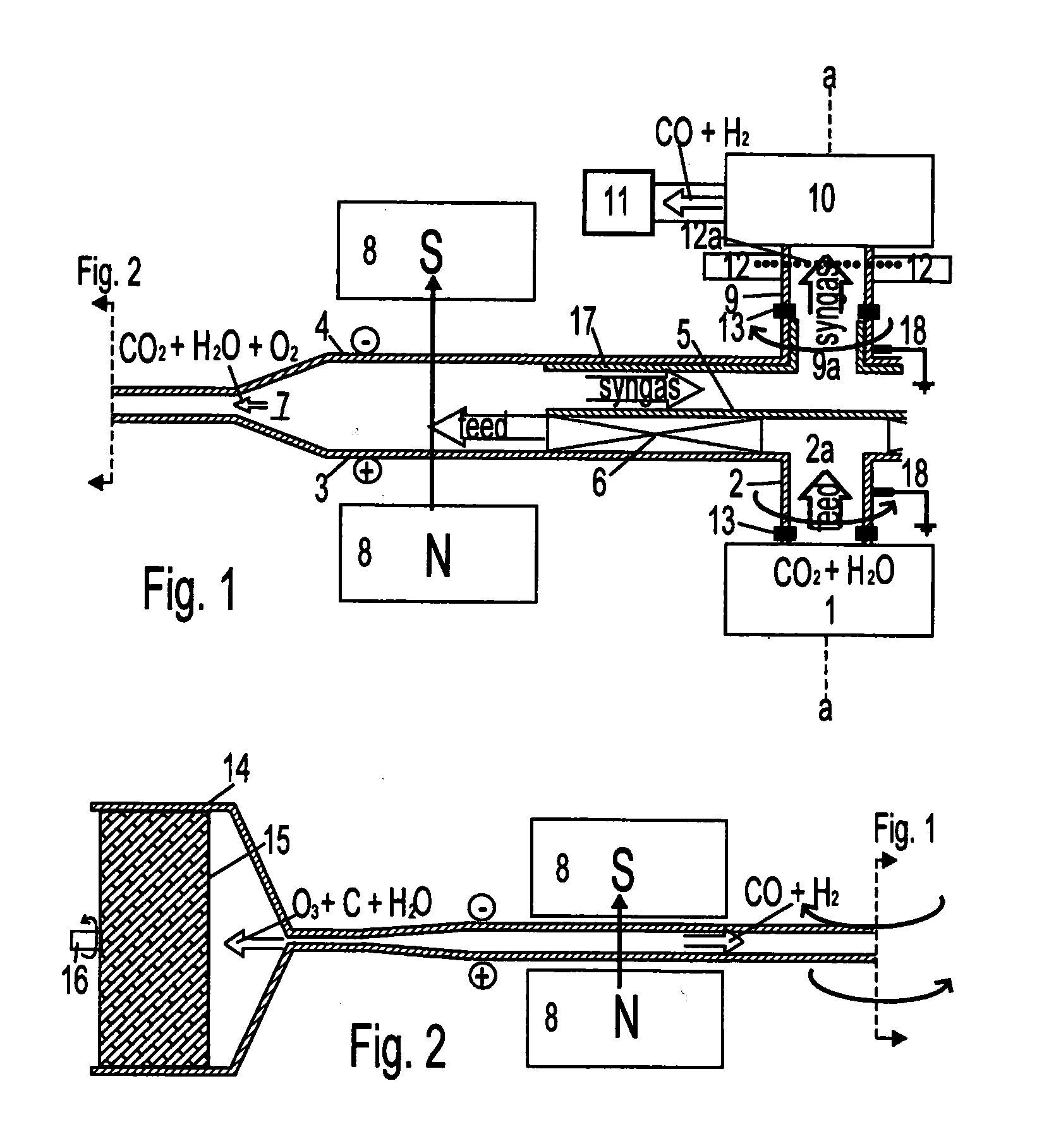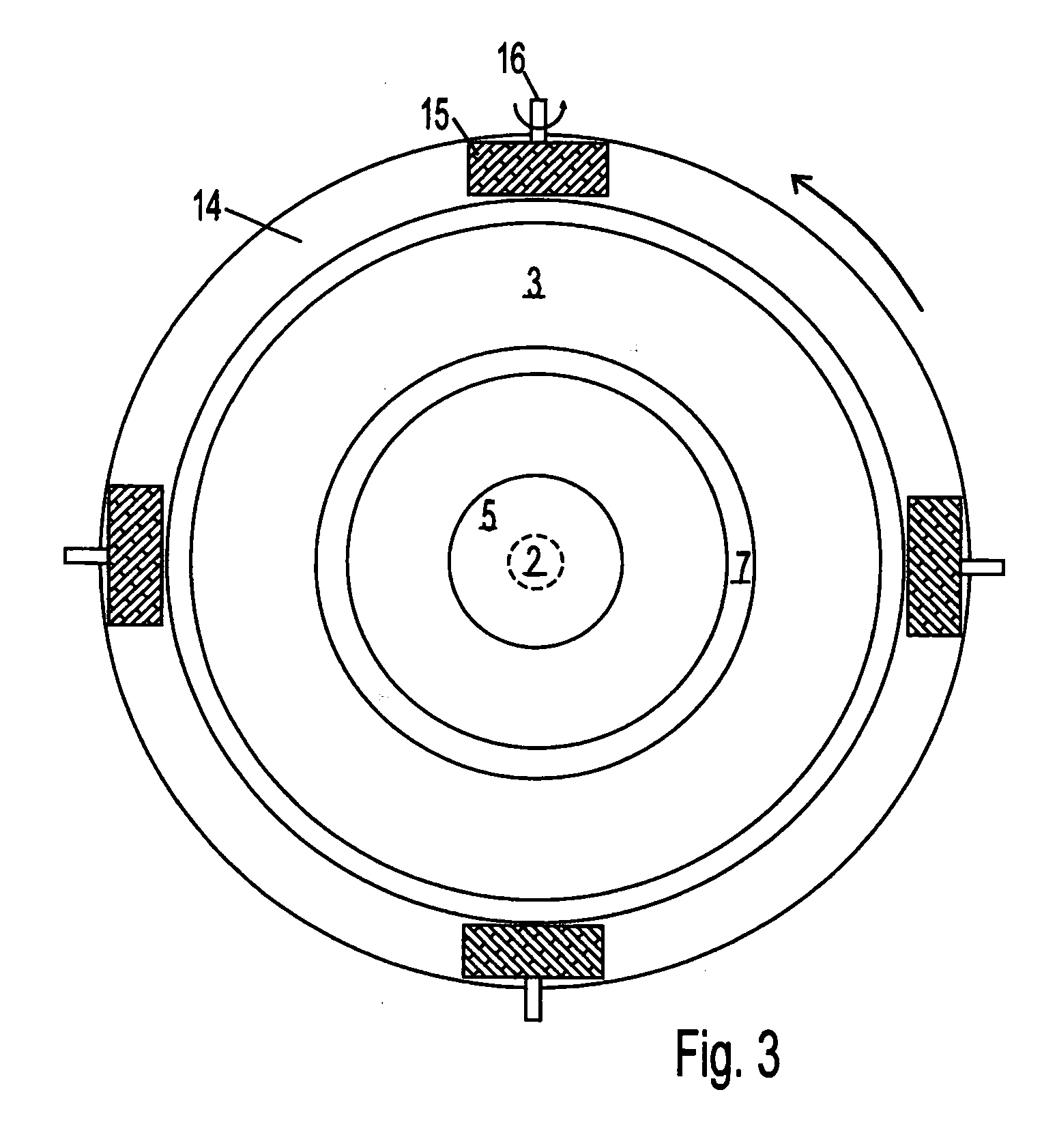Radial counterflow shear electrolysis
a technology of counterflow and shear electrolysis, which is applied in the direction of electrolysis components, electrolysis processes, coatings, etc., can solve the problems of not keeping pace with technology, no economical means for carbon capture and sequestration at coal plants, amine scrubbing and underground storage, etc., to avoid the accumulation of high-quality metallic nanotubes, avoid the effect of falling ions and avoiding electrode erosion
- Summary
- Abstract
- Description
- Claims
- Application Information
AI Technical Summary
Benefits of technology
Problems solved by technology
Method used
Image
Examples
Embodiment Construction
[0091]By the term “electrolysis” is meant processes which cause molecular dissociation by electrical energy, including processes where dissociation occurs at electrode surfaces as well as processes where molecular dissociation occurs in the bulk fluid (gas, liquid, or combination thereof) between oppositely charged electrodes, including pulsed electric field processes and capacitively coupled plasma processes.
[0092]FIG. 1 and FIG. 2 together show a schematic cross-sectional view of the preferred embodiment for simultaneous electrolysis of carbon dioxide and water to produce syngas. FIG. 1 connects to FIG. 2 to show approximately one half of the reactor according to the present invention. The remainder is symmetrical to what is shown.
[0093]Another application of the present invention according to the preferred embodiment is to crack carbon dioxide or other carbonaceous feed gas including methane and other alkanes, to synthesize carbon nanotubes. The flow paths for the various fractio...
PUM
| Property | Measurement | Unit |
|---|---|---|
| Fraction | aaaaa | aaaaa |
| Magnetic field | aaaaa | aaaaa |
| Electrical conductor | aaaaa | aaaaa |
Abstract
Description
Claims
Application Information
 Login to View More
Login to View More - R&D
- Intellectual Property
- Life Sciences
- Materials
- Tech Scout
- Unparalleled Data Quality
- Higher Quality Content
- 60% Fewer Hallucinations
Browse by: Latest US Patents, China's latest patents, Technical Efficacy Thesaurus, Application Domain, Technology Topic, Popular Technical Reports.
© 2025 PatSnap. All rights reserved.Legal|Privacy policy|Modern Slavery Act Transparency Statement|Sitemap|About US| Contact US: help@patsnap.com



